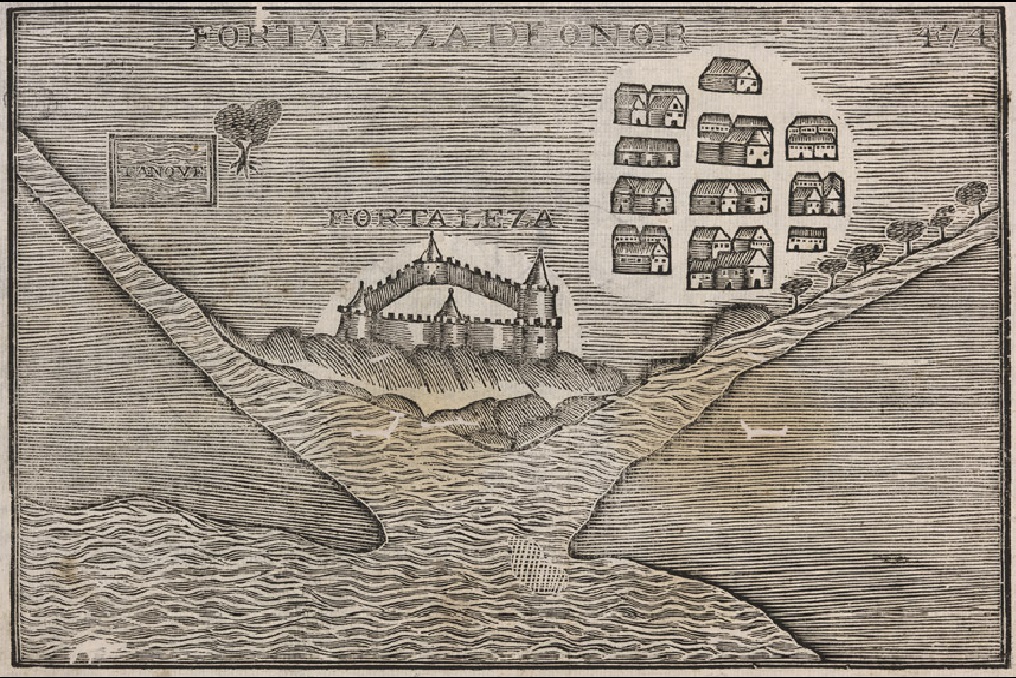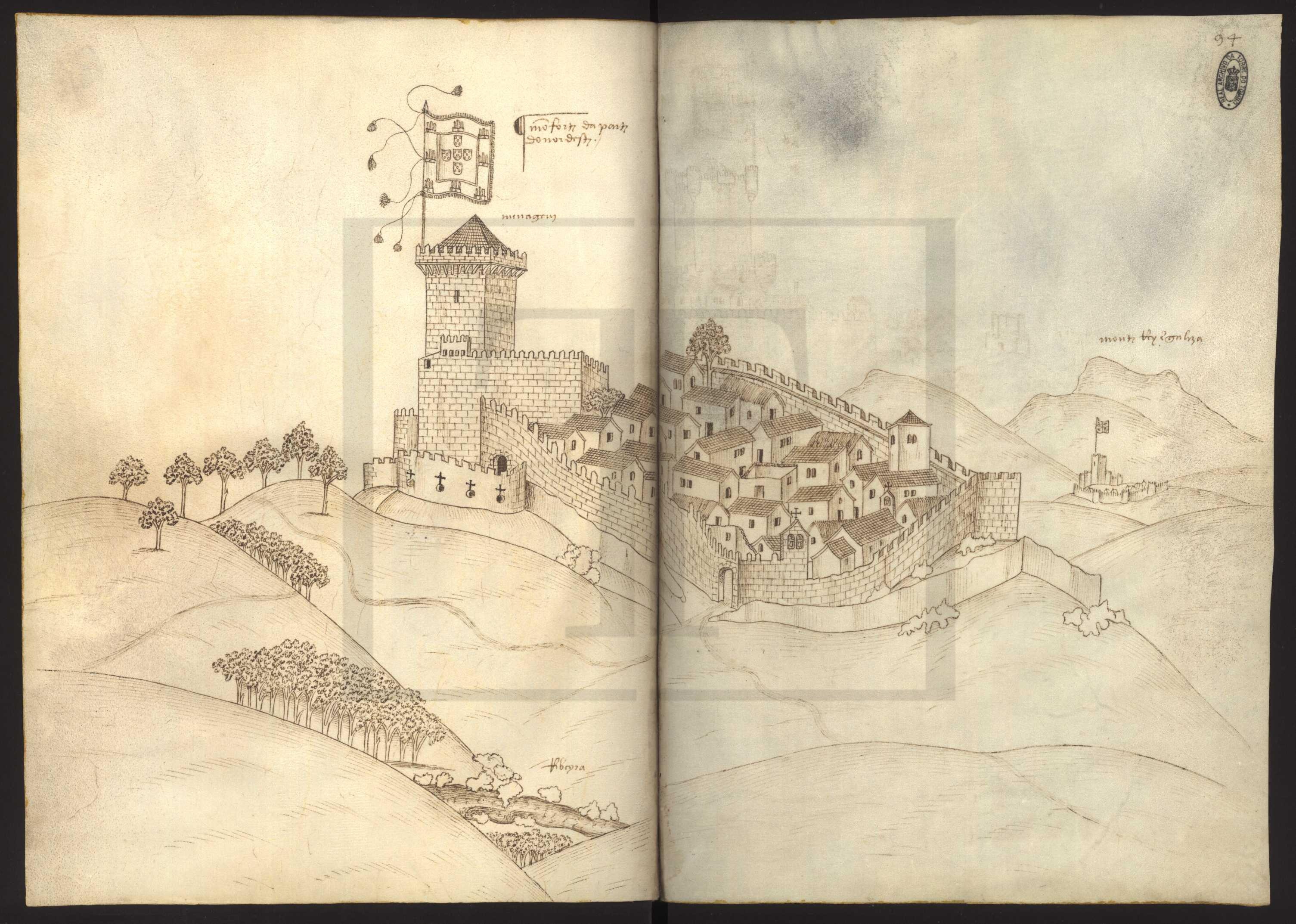|
Count Of Atouguia
Count of Atouguia (in Portuguese ''Conde de Atouguia'') was a Portuguese title of nobility created by a royal decree, dated from 17 December 1448, by King Afonso V of Portugal, and granted to D. Álvaro Gonçalves de Ataíde. This title became extinct due to the 11th Count involvement in the Távora affair. The plot was discovered, the count was executed and his House and estates were confiscated. List of the Counts of Atouguia (1448) #D. Álvaro Gonçalves de Ataíde (c. 1390 -1452); #D. Martinho de Ataíde (c. 1415 - 1499), his son; #D. Luís de Ataíde (1516 - 1581), his great-grandson, 10th Viceroy of India; #D. João Gonçalves de Ataíde (c.1560 - ? ), his 2nd cousin; #D. Luís de Ataíde (c. 1570 - ? ), his son; #D. Jerónimo de Ataíde (c. 1610 - 1665), his son; #D. Manuel Luís de Ataíde (c. 1640 - ? ), his older son; #D. Luís Peregrino de Ataíde (c. 1662 - 1689), his younger brother; #D. Jerónimo de Ataíde (c. 1680 - 1720), his son; #D. Luís Peregrino de ... [...More Info...] [...Related Items...] OR: [Wikipedia] [Google] [Baidu] |
Viceroy
A viceroy () is an official who reigns over a polity in the name of and as the representative of the monarch of the territory. The term derives from the Latin prefix ''vice-'', meaning "in the place of" and the French word ''roy'', meaning "king". He has also been styled the king's lieutenant. A viceroy's territory may be called a viceroyalty, though this term is not always applied. The adjective form is ''viceregal'', less often ''viceroyal''. The term ''vicereine'' is sometimes used to indicate a female viceroy ''suo jure'', although ''viceroy'' can serve as a gender-neutral term. Vicereine is more commonly used to indicate a viceroy's wife. The term has occasionally been applied to the governors-general of the Commonwealth realms, who are ''viceregal'' representatives of the monarch. ''Viceroy'' is a form of royal appointment rather than noble rank. An individual viceroy often also held a noble title, however, such as Bernardo de Gálvez, 1st Viscount of Galveston, who was ... [...More Info...] [...Related Items...] OR: [Wikipedia] [Google] [Baidu] |
List Of Countships In Portugal
This is a list of countships in Portugal ( pt, Condados; singular ''Condado''; the title is ''Conde'', for Count, and ''Condessa'', for Countess): A *Count of Abrantes * Count of Agarez * Count of Agrolongo * Count of Águeda * Count of Aguiar * Count of Albuquerque * Count of Alcáçovas * Count of Alcântara *Count of Alcoutim * Count of Alegrete * Count of Alentém * Count of Alferrarede * Count of Alhandra * Count of Almada *Count of Almarjão *Count of Almedina *Count of Almeida * Count of Almeida Araújo * Count of Almendra *Count of Almoster *Count of Alpedrinha *Count of Alpendurada *Count of Alte *Count of Alto Mearim *Count of Alva *Count of Alvelos *Count of Alves Machado *Count of Alviela *Count of Alvito *Count of Alvor *Count of Amarante * Count of Ameal * Count of Anadia *Count of Antas * Count of Arcos * Count of Arganil * Count of Arge *Count of Ariz * Count of Armamar * Count of Armil * Count of Arnoso *Count of Arraiolos * Count of Arriaga * Count of Arrochela ... [...More Info...] [...Related Items...] OR: [Wikipedia] [Google] [Baidu] |
Family Name
In some cultures, a surname, family name, or last name is the portion of one's personal name that indicates one's family, tribe or community. Practices vary by culture. The family name may be placed at either the start of a person's full name, as the forename, or at the end; the number of surnames given to an individual also varies. As the surname indicates genetic inheritance, all members of a family unit may have identical surnames or there may be variations; for example, a woman might marry and have a child, but later remarry and have another child by a different father, and as such both children could have different surnames. It is common to see two or more words in a surname, such as in compound surnames. Compound surnames can be composed of separate names, such as in traditional Spanish culture, they can be hyphenated together, or may contain prefixes. Using names has been documented in even the oldest historical records. Examples of surnames are documented in the 11th c ... [...More Info...] [...Related Items...] OR: [Wikipedia] [Google] [Baidu] |
Brazil
Brazil ( pt, Brasil; ), officially the Federative Republic of Brazil (Portuguese: ), is the largest country in both South America and Latin America. At and with over 217 million people, Brazil is the world's fifth-largest country by area and the seventh most populous. Its capital is Brasília, and its most populous city is São Paulo. The federation is composed of the union of the 26 States of Brazil, states and the Federal District (Brazil), Federal District. It is the largest country to have Portuguese language, Portuguese as an List of territorial entities where Portuguese is an official language, official language and the only one in the Americas; one of the most Multiculturalism, multicultural and ethnically diverse nations, due to over a century of mass Immigration to Brazil, immigration from around the world; and the most populous Catholic Church by country, Roman Catholic-majority country. Bounded by the Atlantic Ocean on the east, Brazil has a Coastline of Brazi ... [...More Info...] [...Related Items...] OR: [Wikipedia] [Google] [Baidu] |
Portuguese India
The State of India ( pt, Estado da Índia), also referred as the Portuguese State of India (''Estado Português da Índia'', EPI) or simply Portuguese India (), was a state of the Portuguese Empire founded six years after the discovery of a sea route to the Indian subcontinent by Vasco da Gama, a subject of the Kingdom of Portugal. The capital of Portuguese India served as the governing centre of a string of military forts and trade posts scattered all over the Indian Ocean. The first viceroy, Francisco de Almeida established his base of operations at Fort Manuel, after the Kingdom of Cochin negotiated to become a protectorate of Portugal in 1505. With the Portuguese conquest of Goa from the Bijapur Sultanate in 1510, Goa became the major anchorage for the Portuguese Armadas arriving in India. The capital of the viceroyalty was transferred from Cochin in the Malabar region to Goa in 1530. From 1535, Mumbai (Bombay) was a harbour of Portuguese India as '' Bom Bahia'', unt ... [...More Info...] [...Related Items...] OR: [Wikipedia] [Google] [Baidu] |
Luís De Ataíde, 3rd Count Of Atouguia
D. Luís de Ataíde, 1st Marquess of Santarém and 3rd Count of Atouguia (c. 1516 – March 10, 1581), was a Portuguese nobleman, military commander and statesman of the 16th century, who stood out for his military feats in the Portuguese State of India. He served as Viceroy of India for two non-subsequent terms (1568–1571 and 1578–1581). In his first term in India, Dom Luís de Ataíde led military campaigns in the war of the League of the Indies that would probably be described today as a total war (a concept created in the 18th century, in opposition to the notion of limited war); for the Portuguese Empire had to use all of its available resources - military, economic, political and diplomatic - and also include operations involving or affecting civilians, in order to be able to resist a joint assault by the Indian potentates, with the purpose of expelling the Portuguese from their cities, forts and trading posts in the Indian Ocean. Early life He was born in 1516, the ... [...More Info...] [...Related Items...] OR: [Wikipedia] [Google] [Baidu] |
Count
Count (feminine: countess) is a historical title of nobility in certain European countries, varying in relative status, generally of middling rank in the hierarchy of nobility. Pine, L. G. ''Titles: How the King Became His Majesty''. New York: Barnes & Noble, 1992. p. 73. . The etymologically related English term "county" denoted the territories associated with the countship. Definition The word ''count'' came into English from the French ''comte'', itself from Latin ''comes''—in its accusative ''comitem''—meaning “companion”, and later “companion of the emperor, delegate of the emperor”. The adjective form of the word is "comital". The British and Irish equivalent is an earl (whose wife is a "countess", for lack of an English term). In the late Roman Empire, the Latin title ''comes'' denoted the high rank of various courtiers and provincial officials, either military or administrative: before Anthemius became emperor in the West in 467, he was a military ''comes ... [...More Info...] [...Related Items...] OR: [Wikipedia] [Google] [Baidu] |
Martinho De Ataíde, 2nd Count Of Atouguia
Dom Martinho de Ataíde (c. 1415 – 1499), 2nd Count of Atouguia, was a 15th-century Portuguese nobleman and diplomat. In 1455, he was granted the lordship of the Canary Islands, by donation from King Henry IV of Castile, Henry IV of Castile, which he later sold to the Duarte de Meneses, 3rd Count of Viana, Count of Viana. Biography He was the eldest son of Álvaro Gonçalves de Ataíde, 1st Count of Atouguia and Dona Guiomar de Castro, of the House of Cadaval. He succeeded in the title, shortly after his father's death, by a royal decree from Afonso V of Portugal, Afonso V of Portugal, dated 14 February 1452. He thus became the 2nd Count of Atouguia da Baleia, Atouguia, his title being later confirmed by royal letters of 1482 and 1487. Missions in Ceuta and Castile He was with his father at the Battle of Alfarrobeira, on the side of King Afonso V of Portugal, Afonso V. The sovereign, soon after making him Count, sent him on a mission to the Portuguese fortress of Ceuta, ac ... [...More Info...] [...Related Items...] OR: [Wikipedia] [Google] [Baidu] |




